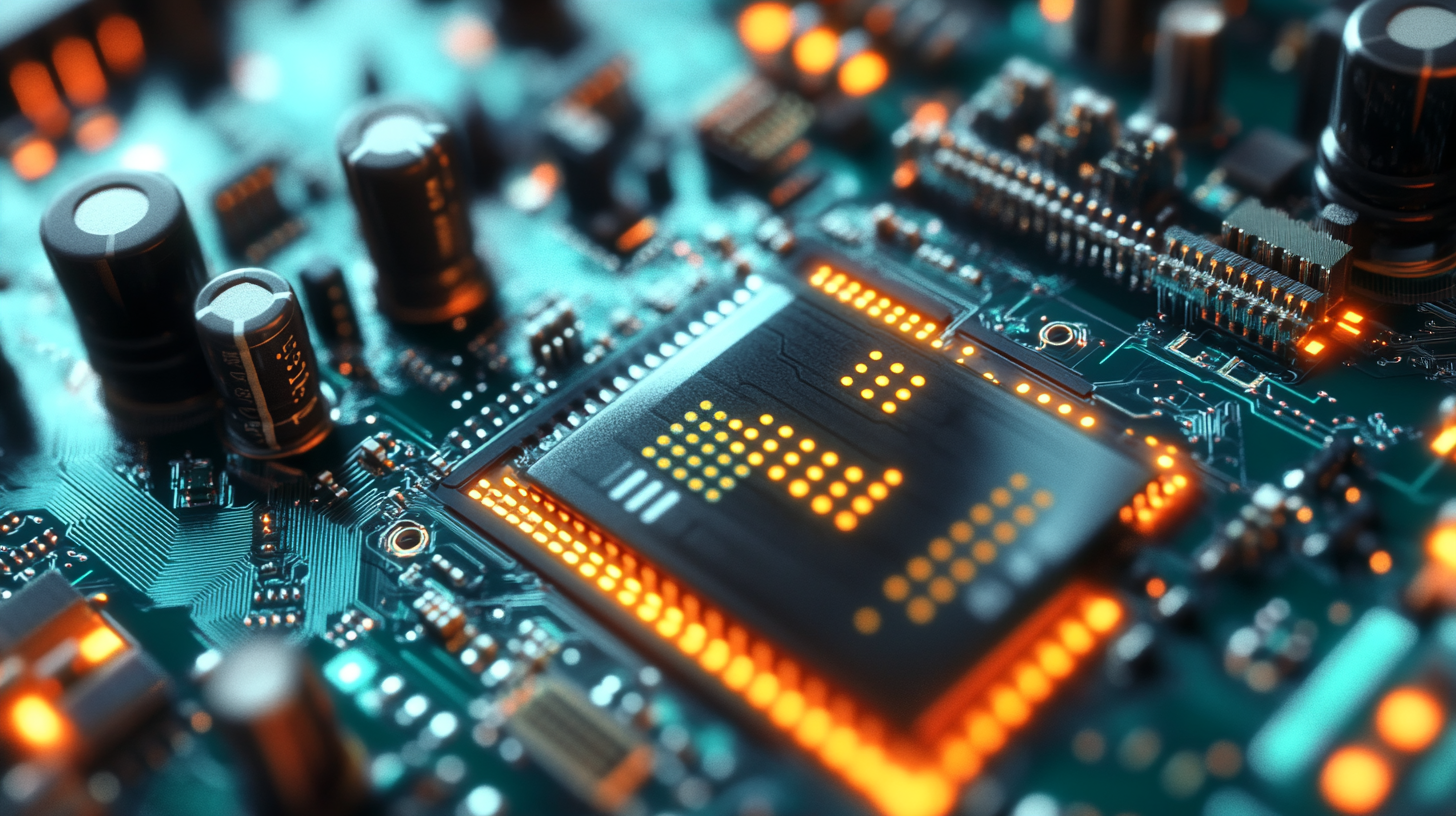 In the rapidly evolving landscape of electronics manufacturing, the significance of Printing Circuit Boards (PCBs) cannot be overstated. According to a recent market analysis by ResearchAndMarkets, the global PCB market is expected to reach $75 billion by 2024, driven by the demand for innovative electronic devices across various sectors including telecommunications, consumer electronics, and automotive industries. Understanding the characteristics and application ranges of different types of PCBs is vital for manufacturers looking to optimize their sourcing strategies. As technology advances, so too do the requirements for PCBs, with trends leaning towards miniaturization, increased functionality, and improved thermal performance. This blog will delve into best practices for sourcing premium PCBs while highlighting the unique attributes and suitable applications of various PCB types, ensuring that stakeholders can make informed decisions in this competitive field.
In the rapidly evolving landscape of electronics manufacturing, the significance of Printing Circuit Boards (PCBs) cannot be overstated. According to a recent market analysis by ResearchAndMarkets, the global PCB market is expected to reach $75 billion by 2024, driven by the demand for innovative electronic devices across various sectors including telecommunications, consumer electronics, and automotive industries. Understanding the characteristics and application ranges of different types of PCBs is vital for manufacturers looking to optimize their sourcing strategies. As technology advances, so too do the requirements for PCBs, with trends leaning towards miniaturization, increased functionality, and improved thermal performance. This blog will delve into best practices for sourcing premium PCBs while highlighting the unique attributes and suitable applications of various PCB types, ensuring that stakeholders can make informed decisions in this competitive field.
In today's competitive digital landscape, selecting high-quality PCB suppliers is crucial for ensuring the reliability and performance of your electronic products. The first step in this process is conducting thorough research on potential suppliers. Look for companies with a proven track record, positive customer reviews, and industry certifications that demonstrate their commitment to quality. Attending industry trade shows and networking events can provide firsthand insights into supplier capabilities and innovations, helping you make informed decisions.
Another best practice is to prioritize clear communication with potential suppliers. Engaging in detailed discussions about your specific requirements, timelines, and expectations fosters transparency and sets the foundation for a successful partnership. It’s also essential to assess their production capabilities, technological advancements, and quality control measures. A supplier that embraces cutting-edge technology and rigorous testing protocols is more likely to deliver PCBs that meet your exact specifications and withstand the demands of the marketplace. By following these best practices, you can unlock the digital edge and ensure your projects stay ahead of the competition.
| Criteria | Description | Importance Rating (1-5) | Validation Method |
|---|---|---|---|
| Manufacturing Capabilities | Assess the supplier's ability to handle complex designs and volume requirements. | 5 | Request samples and evaluate technological processes. |
| Quality Certifications | Look for ISO 9001, IPC certifications, and other industry standards. | 4 | Review documentation and audit reports. |
| Lead Time | Evaluate the turnaround time for prototypes and production batches. | 4 | Check schedule commitments and past performance records. |
| Cost Structure | Analyze pricing models, including fixed pricing and volume discounts. | 3 | Compare quotes and overall value versus service offered. |
| Customer Support | Consider the availability of responsive support during and post-order. | 5 | Conduct surveys and check references from previous clients. |
| Sustainability Practices | Evaluate environmental policies and use of eco-friendly materials. | 4 | Request information on materials and manufacturing processes. |
When sourcing premium printing circuit boards (PCBs), it is crucial to evaluate manufacturing capabilities and performance through key metrics. According to a report by IPC, global PCB industry revenues are projected to exceed $80 billion by 2025, reflecting the growing demand for high-quality electronics. Key performance indicators (KPIs) such as defect rates, manufacturing lead times, and production yield should be prioritized to ensure that your supplier meets industry standards. Defect rates below 0.5% are essential for maintaining product reliability, particularly in high-stakes sectors like aerospace and medical devices.
Tip: Always ask potential suppliers for their most recent quality certifications and metrics. Look for data on their first-pass yield, which ideally should be above 95%. This metric not only indicates efficiency but also the supplier's commitment to quality assurance.
Another vital aspect to consider is the supplier's technological capabilities. Access to advanced manufacturing techniques such as automated optical inspection (AOI) and laser drilling contributes significantly to PCB quality. A report by market research firm Mordor Intelligence suggests that companies utilizing automated processes can reduce production times by up to 30%, providing a competitive edge in the fast-paced electronics market.
Tip: Inquire about the types of machinery and processes that a supplier uses in their manufacturing line. Understanding their level of automation can give insights into their capacity to meet your order volumes and timelines effectively.
 When sourcing premium printed circuit boards (PCBs), understanding lead times is crucial to making informed decisions. Lead times can significantly affect project timelines and overall product delivery. It's essential to recognize that longer lead times can lead to increased costs and potential delays in product launches. Evaluating the lead times of different suppliers can help businesses find a balance between quality and efficiency.
When sourcing premium printed circuit boards (PCBs), understanding lead times is crucial to making informed decisions. Lead times can significantly affect project timelines and overall product delivery. It's essential to recognize that longer lead times can lead to increased costs and potential delays in product launches. Evaluating the lead times of different suppliers can help businesses find a balance between quality and efficiency.
Tip: Always ask for estimated lead times upfront when engaging with suppliers. This information will allow you to plan your production schedule effectively and avoid unexpected disruptions.
Additionally, consider the impact of global supply chain dynamics on lead times. Political events, natural disasters, and changes in trade policies can all affect PCB manufacturing capabilities. Staying informed about these factors is vital for anticipating potential delays and adjusting your sourcing strategies accordingly.
Tip: Maintain open communication with your suppliers to receive timely updates on any changes in lead times or availability of materials. Building a good relationship can provide you with the agility to navigate unexpected challenges in your sourcing process.
When sourcing premium printed circuit boards (PCBs), cost-effectiveness is crucial for maintaining competitive advantage while ensuring high quality. One effective strategy is to engage with multiple suppliers early in the process. By doing so, companies can obtain a variety of quotes and negotiate better pricing based on the comparative quality and features of the boards offered. This not only fosters a competitive environment among suppliers but also allows businesses to identify the best possible options that align with their budgetary constraints.
Additionally, leveraging modern technology can significantly enhance cost-effectiveness. Utilizing online sourcing platforms and digital communication tools streamlines the procurement process, reducing the time and labor costs associated with traditional methods. Implementing digital tools for design verification before moving to production can also minimize errors, thus avoiding costly revisions. Emphasizing these strategies creates a pathway to not only lower costs but also ensure that premium PCBs meet the high standards needed for advanced applications in various industries.

Emerging technologies are revolutionizing the PCB (Printed Circuit Board) production landscape, helping manufacturers enhance both quality and efficiency. One of the most significant advancements in this field is the integration of automation and artificial intelligence into the manufacturing process. These technologies streamline production lines by reducing human error and increasing precision. Automated machines can quickly adapt to design changes, ensuring a seamless transition from prototyping to mass production while maintaining high standards of quality.
Another notable trend is the adoption of advanced materials and 3D printing techniques. New materials not only improve the durability and performance of PCBs but also allow for more intricate designs that were previously unattainable. 3D printing technology further elevates PCB production by enabling rapid prototyping and reducing the time-to-market for new products. This shift towards innovative techniques and materials reflects a broader commitment within the industry to optimize performance while meeting the growing demands for customization and sustainability in electronic components.